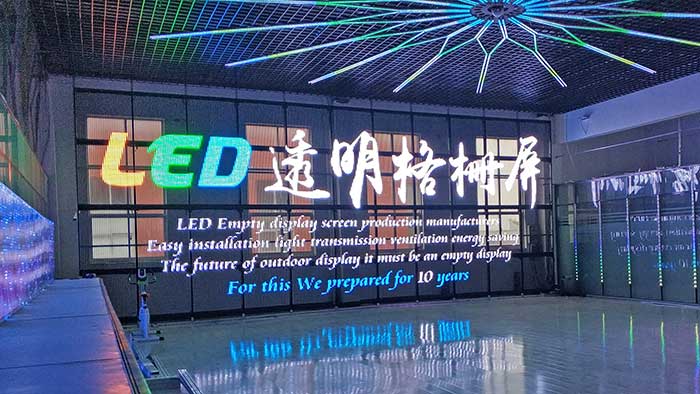The application of full-color LED displays is becoming increasingly widespread, and I believe many people have some understanding of full-color LED displays. This article mainly discusses one of the factors that affect LED full-color displays, temperatur. Full color LED displays have advantages such as energy conservation, environmental protection, and long lifespan. Dock, temperature has a significant impact on full color LED displays, directly affecting their lifespan, light efficiency, färg, etc. Därför, the appropriate temperature is crucial for full color LED displays. What is the impact of temperature on full-color LED displays?
The temperature has the following effects on indoor outdoor LED displays:
1、 Excessive temperature can cause complete destruction of LED full-color displays
(1) The working temperature of the full-color LED display screen exceeding the chip’s bearing temperature will quickly reduce the luminous efficiency of the full-color LED display screen, resulting in significant light attenuation and damage;
(2) Full color LED displays are often packaged with transparent epoxy resin. If the junction temperature exceeds the solid-phase transition temperature (usually 125 ℃), the packaging material will transform into a rubber like shape and the coefficient of thermal expansion will increase sharply, leading to open circuits and failure of full color LED displays.
2、 An increase in temperature will shorten the lifespan of full-color LED displays
The lifespan of a full-color LED display screen is manifested by its light decay, which means that over time, the brightness decreases and eventually goes out. The lifespan of a full-color LED display screen is typically defined as the time it takes for its luminous flux to decay by 30.
The common causes of light attenuation in full-color LED displays are as follows:
(1) The defects in the chip material of full-color LED display screens will rapidly proliferate and propagate at high temperatures, until they invade the emitting region, forming a large number of non radiative composite centers, seriously reducing the luminous efficiency of full-color LED display screens. Dessutom, under high temperature conditions, micro defects within the material and fast expanding impurities from the interface and the board will also introduce into the luminescent region, forming a large number of deep energy levels, which will also accelerate the light decay of full-color LED display devices
(2) At high temperatures, transparent epoxy resin undergoes denaturation and yellowing, which affects its transparency. The higher the operating temperature, the faster this process will occur, which is another major reason for the light attenuation of full-color LED displays.
(3) The light attenuation of fluorescent powder is also a major factor affecting the light attenuation of full-color LED displays, as the attenuation of fluorescent powder is very severe at high temperatures.
3、 An increase in temperature will reduce the luminous efficiency of LED full-color displays
The reasons why temperature affects the light efficiency of full-color LED displays include the following aspects:
(1) As the temperature increases, the concentration of electrons and holes will increase, the bandgap width will decrease, and the electron mobility will decrease.
(2) As the temperature increases, the probability of radiative recombination between electrons and holes in the potential well decreases, resulting in non radiative recombination (generating heat), thereby reducing the internal quantum efficiency of full-color LED displays.
(3) The increase in temperature causes the blue light peak of the chip to shift towards the long wavelength direction, resulting in a mismatch between the emission wavelength of the chip and the excitation wavelength of the fluorescent powder. This also leads to a decrease in the efficiency of external light extraction for white full-color LED displays.
(4) As the temperature increases, the quantum efficiency of the fluorescent powder decreases, the light output decreases, and the external light extraction efficiency of the full-color LED display screen decreases.
(5) The performance of silicone is greatly affected by environmental temperature. As the temperature increases, the thermal stress inside the silicone increases, leading to a decrease in the refractive index of the silicone, thereby affecting the light efficiency of full-color LED displays.
The above points are the impact of temperature on full-color LED displays. Through the above introduction, it is known that the impact of temperature increase on full-color LED displays is very significant. Choosing the appropriate and appropriate temperature is crucial for the use of full-color LED displays.



